Motorbike simulator machines replicate riding a bike in a closed environment. They provide users with a safe and comprehensive method to train, practice, or enjoy the excitement of riding without needing a motorcycle. Motorcycle simulator machines are often made from a stationary bike or platform outfitted with screens, controllers, and sensory input devices such as motion simulators, windmills, and haptic feedback systems.
With their humble beginnings as arcade games, motorcycle-simulating machines have evolved a lot. Motorcycle simulator games of the 1970s and 1980s were primitive arcade machines with basic steering capabilities and a screen representing motorcycle movement. They were primarily intended for pleasure and included little in the way of instruction or education.
Contents
- Motorbike Simulator Machine Evolution: From Arcade Games to High-Tech Simulators
- What To Look For In A Modern Motorbike Simulator Machine
- Motorbike Simulator Machine Applications: Instruction, Science, and Entertainment
- Motorbike Simulator Devices’ Difficulties And Limitations: Issues About Safety And Realism
- What to Look for in a Professional Motorcycle Simulator Machine
- Virtual Reality, Thrust, And Other Motorbike Simulator Machines
- The Advantages Of Utilizing A Motorbike Simulator Simulator For Training And Recreation
- Advancements & Trends In Motorcycle Simulator Machines
- Motorbike Simulator Machine Applications: Training, Development, and Entertainment
- Motorbike Simulator Machines’ Difficulties And Limitations:
- Conclusion
Motorbike Simulator Machine Evolution: From Arcade Games to High-Tech Simulators
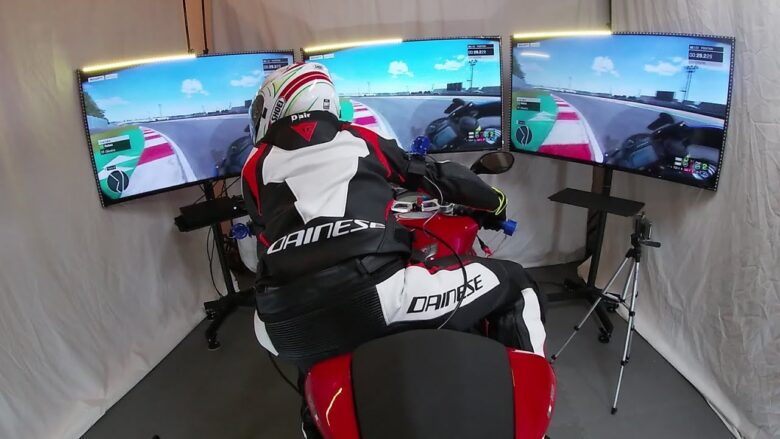
Source: youtube.com
The possibilities of motorbike simulator devices increased as technology evolved. Motion-based motorbike simulators were created in the 1990s, providing even more authentic and immersive gameplay. A stationary motorcycle might tilt and move in reaction to the rider’s actions, creating a more authentic ride.
Motorcycle simulator machines are now high-tech devices with various advanced features and abilities. Some simulations use technology like virtual reality to provide a genuinely immersive riding experience, while others use haptic feedback to replicate wind, vibration, and road surfaces. These simulators are utilized for teaching, research, and professional growth in industries such as motorsports, police departments, and military applications, in addition to entertainment.
Technological advancements and an increasing need for more authentic and immersive experiences have fueled the evolution of motorcycle simulator equipment. Motorcycle simulator machines are poised to become an increasingly more important element of the training, entertainment, and entertainment landscape as technology advances.
What To Look For In A Modern Motorbike Simulator Machine
It is critical to understand the essential qualities when selecting motorbike simulator equipment. The amount of reality, muscle movement technology, virtual reality skills, and apps that permit customization of the moving experience are all examples. A high-quality motorbike simulator machine should have precise controls, a solid performance function, and realistic graphics and audio.
Virtual Reality, Rotation, And Other Motorbike Simulator Machines
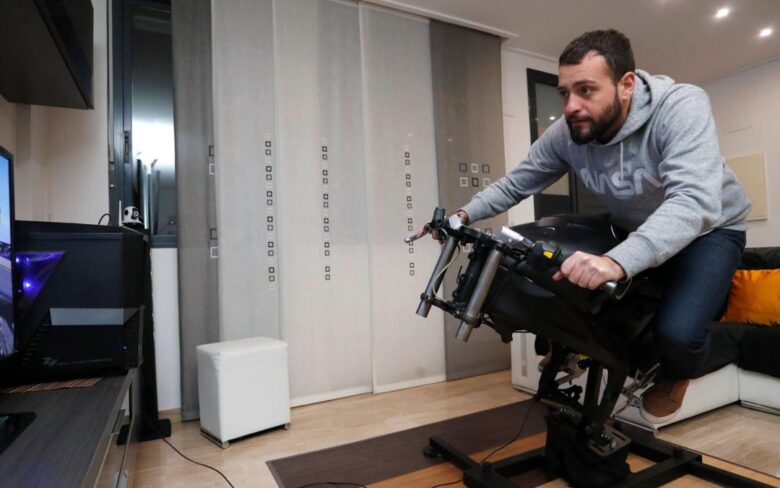
Source: leangp.com
Motorcycle simulator devices come in various styles, including primary arcade-style machines, immersive virtual machines, and specialist simulators. Arcade-style machines, commonly found in entertainment venues, provide an essential riding experience. Professional-grade simulators are developed for professional use, whereas virtual reality devices provide a more immersive experience.
The Advantages of Utilizing a Motorbike Simulator Machine for Training and Recreation
The advantages of using a motorbike simulator machine include amusement, training, and research. These devices offer riders to practice their abilities in a safe setting, try new tactics, and research the effects of different scenarios on rider behavior. They also provide a safe and valuable way to acquire or enhance riding skills on a motorcycle.
Advancements & Trends In Motorcycle Simulator Machines
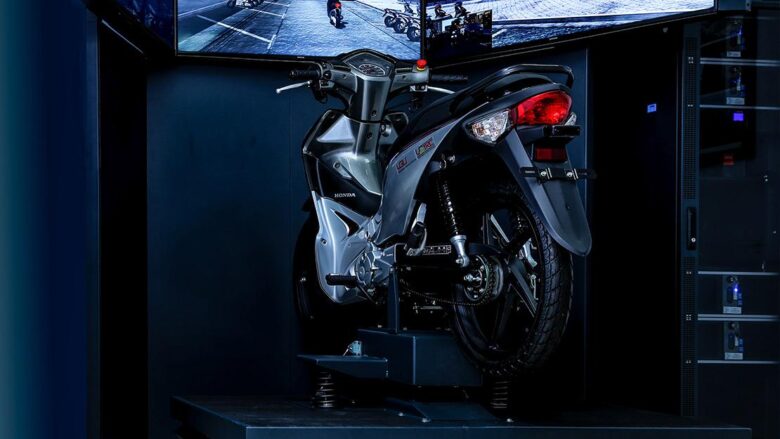
Source: landersimulation.com
With continued technological breakthroughs and increased R&D investments, the future of motorcycle sim machines seems bright. The ongoing integration of VR technology and motion-based systems should result in progressively more lifelike experiences. Further customization possibilities are also anticipated, allowing riders to customize their journey to their preferences.
Motorbike Simulator Machine Applications: Instruction, Science, and Entertainment
Motorbike simulator machines can be used to instruct new riders, improve veteran riders’ abilities, and research rider behavior and safety. They also offer an exciting and engaging kind of entertainment for enthusiasts.
Motorbike Simulator Devices’ Difficulties And Limitations: Issues About Safety And Realism
While motorcycle-simulating machines have numerous advantages, they also have drawbacks and restrictions. They include realism and safety problems, as simulator technology cannot fully imitate real-world settings. Common complaints include simulator nausea and an absence of a physical sensation. To guarantee ensuring users have a well-rounded experience, simulator machines must be used in conjunction with real-world instruction.
What to Look for in a Professional Motorcycle Simulator Machine
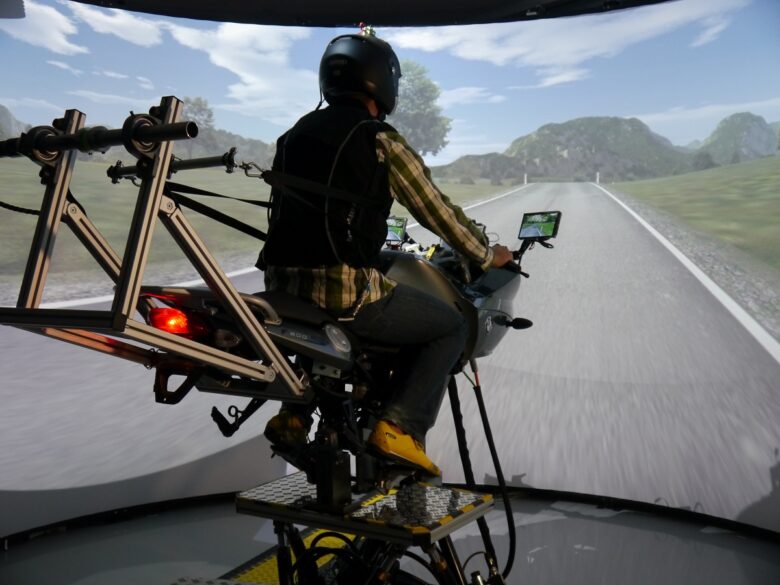
Source: vi-grade.com
It is critical to understand the essential qualities when selecting motorbike simulator equipment. The amount of immersion, motion-based technology, interactive virtual capabilities, and the software that permits ride customization are examples. A high-quality motorbike simulator machine should have precise controls, a solid motion system, and realistic graphics and audio.
Virtual Reality, Thrust, And Other Motorbike Simulator Machines
Motorcycle simulator devices come in various styles, including primary pinball machines, interactive virtual machines, and professional simulators. Arcade-style machines, commonly found in entertainment venues, provide an essential riding experience. Highly qualified sims are designed for training, whereas virtual reality devices provide a more immersive experience.
Nonetheless, realizing the limitations and constraints of simulating technology, such as realism and safety considerations, is critical. Finally, for riders to advance their abilities and improve their lives, one healthy approach that includes training seminars and real-world bike experience is required.
The Advantages Of Utilizing A Motorbike Simulator Simulator For Training And Recreation
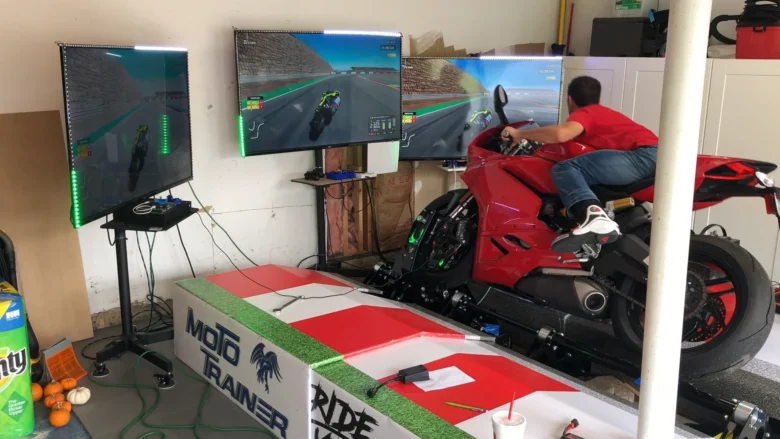
Source: reddit.com
The advantages of using a motorbike simulator machine include amusement, training, and research. These machines allow riders to practice their abilities in a safe setting, try new tactics, and research the effects of different scenarios on rider behavior. They also provide a safe and cost-effective way to acquire or improve riding skills on a motorcycle.
Advancements & Trends In Motorcycle Simulator Machines
With continued technological breakthroughs and increased R&D investments, the future of motorcycle simulator machines seems bright. The ongoing integration of virtual reality and motion-based systems should result in progressively more lifelike experiences. Further customization possibilities are also anticipated, allowing riders to customize their experience to their preferences.
Motorbike Simulator Machine Applications: Training, Development, and Entertainment
Motorbike simulator machines can be used to instruct new riders, improve veteran riders’ abilities, and research rider behavior and safety. They also offer an exciting and engaging kind of entertainment for enthusiasts.
Motorbike Simulator Machines’ Difficulties And Limitations:
Realism and Safety Issues – While motorcycle sim machines have numerous advantages but have certain drawbacks and restrictions, they include realism and safety problems, as simulator equipment cannot fully imitate real-world settings. Common complaints include simulator nausea and an absence of physical sensation. To guarantee that riders receive a complete experience, simulator machines must be used in concert with real-world instruction.
Conclusion
Motorbike sim machines have evolved greatly since their humble beginnings as arcade games. Today’s high-tech simulators provide realistic and unique gameplay that nearly resembles actual riding. These machines can be used for various purposes, including learning, research, and amusement, and they give a safe and paid method of learning how to ride a bicycle or enhance riding skills. With continued technological breakthroughs and more significant investment in development and research, motorcycle simulation machines’ future is bright.
